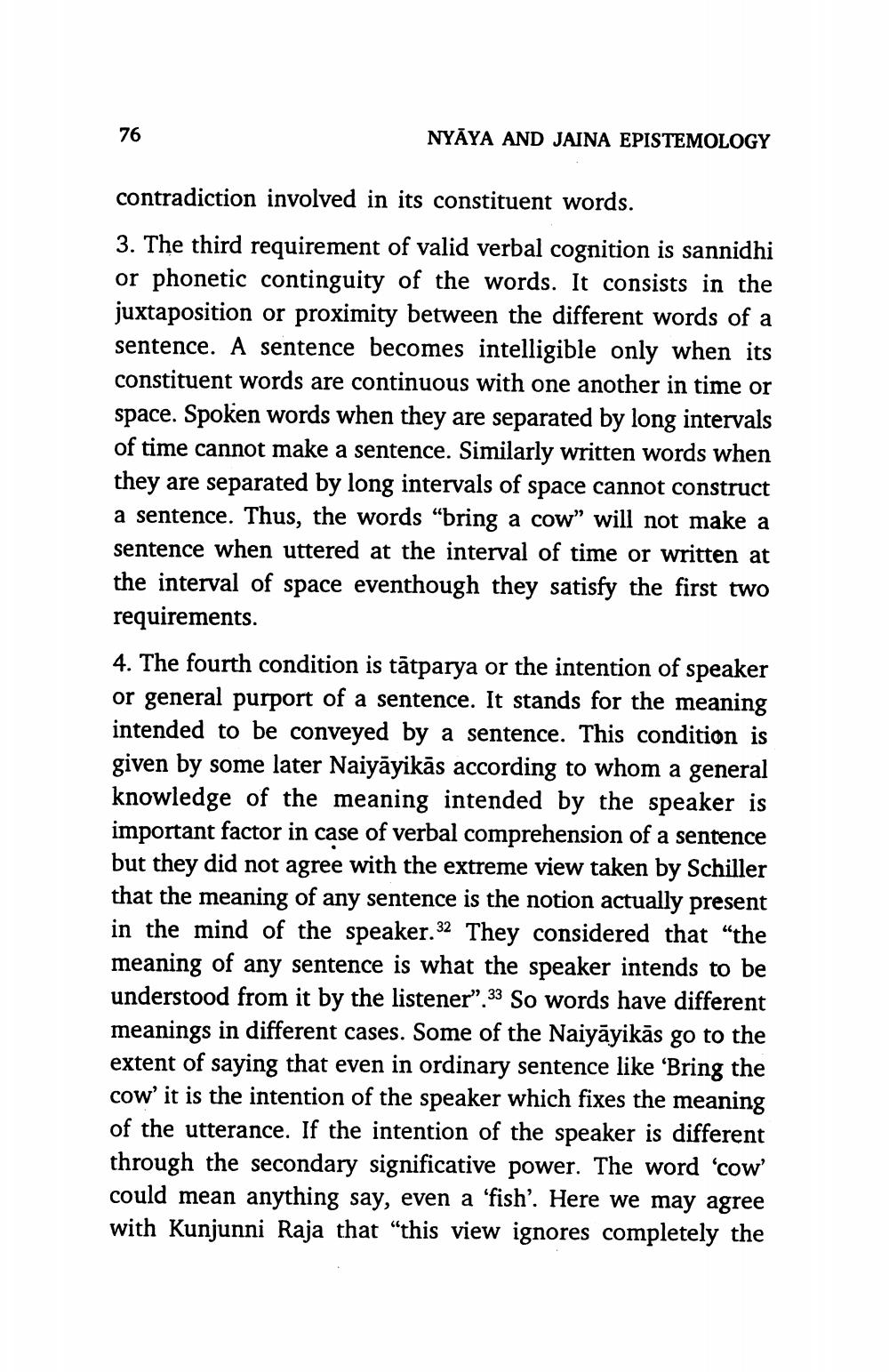________________
76
NYAYA AND JAINA EPISTEMOLOGY
contradiction involved in its constituent words.
3. The third requirement of valid verbal cognition is sannidhi or phonetic continguity of the words. It consists in the juxtaposition or proximity between the different words of a sentence. A sentence becomes intelligible only when its constituent words are continuous with one another in time or space. Spoken words when they are separated by long intervals of time cannot make a sentence. Similarly written words when they are separated by long intervals of space cannot construct a sentence. Thus, the words "bring a cow" will not make a sentence when uttered at the interval of time or written at the interval of space eventhough they satisfy the first two requirements.
4. The fourth condition is tātparya or the intention of speaker or general purport of a sentence. It stands for the meaning intended to be conveyed by a sentence. This condition is given by some later Naiyāyikās according to whom a general knowledge of the meaning intended by the speaker is important factor in case of verbal comprehension of a sentence but they did not agree with the extreme view taken by Schiller that the meaning of any sentence is the notion actually present in the mind of the speaker.32 They considered that "the meaning of any sentence is what the speaker intends to be understood from it by the listener". 33 So words have different meanings in different cases. Some of the Naiyayikās go to the extent of saying that even in ordinary sentence like 'Bring the cow' it is the intention of the speaker which fixes the meaning of the utterance. If the intention of the speaker is different through the secondary significative power. The word 'cow' could mean anything say, even a 'fish'. Here we may agree with Kunjunni Raja that "this view ignores completely the




